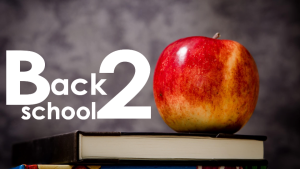 The Henry County Public School division unveiled plans to operate under an “AABB” schedule, with the first day of the semester slated for Aug. 10.
The Henry County Public School division unveiled plans to operate under an “AABB” schedule, with the first day of the semester slated for Aug. 10.
The new structure means that students in group “A” will attend school on Monday and Tuesday and learn virtually from home Wednesday-Friday. Students in group “B” will learn virtually from home on Monday and Tuesday, attend school in person on Wednesday and Thursday, and learn virtually from home on Friday according to Monica Hatchett, director of Communications & Organizational Learning. Siblings will attend school on the same day, regardless of the school (s) they attend. Families who select virtual learning only for their students will be given that option for the fall semester, she added.
New instruction will be provided for all students with a focus on acceleration, not remediation. Students will be assessed to determine learning loss and gaps, and differentiation of instruction will be provided through intensive small group instruction.
First grade is such a critical year for students learning how to read, and daily face-to-face reading instruction is vital; therefore, the school division is exploring the possibility to safely allow all first grade students to attend classes four days a week.
The division also is investigating to determine, if space and safely allows it, for all Pre-K students to attend each day. Accommodations and priority will be made to allow certain special education students who may need to attend school physically each day to do so.
All students will be issued a device to support learning at school, and virtually. Students who need access to the internet at home will be issued devices that act as a WIFI hotspot, if possible. If not possible, students will download necessary instructional items to their devices while at school. The items can be accessed without using the Internet, and used while learning virtually from home.
“The school division will transition to the use of Canvas as our learning management system requiring all teachers to provide instructional content via Canvas and Virtual Virginia,” according to Hatchett. There will be a focus on big ideas in the core areas integrating when possible.
Teachers will use “differentiation and flipped classroom models to provide instruction in a blended learning environment,” she said.
Professional development modules have been developed and are available for teachers to complete on the following:
*Classroom Management and Culture in a Virtual Learning Environment
*Building Partnerships With Students and Families
*Differentiation of Instruction
*SEL in a Virtual Setting
*Designing Effective Virtual Learning Experiences
*Differentiation for Secondary English, Social Studies, Mathematics and Science
*Blended Learning Using a Flipped Classroom
*Learning Stations and Small Group Instruction in a Virtual Learning Environment
For families that depend on school buses to transport their students to and from school on a daily basis, school officials said:
*School buses will carry less than 50 percent of their normal capacity;
*Students are required to wear face coverings while riding the bus;
*Students will be required to sit one to a seat, except for students who live together and attend the same school — they will be asked to share a seat;
*Students will be required to adhere to seating arrangements that have been established to maintain social distancing;
*Buses will be sanitized after each morning and afternoon route, and mid-day shuttle buses will be sanitized before each route;
* Any bus that has transported a student who later tests positive for COVID-19 will be temporarily grounded until it is thoroughly disinfected.
The school division also will implement other health and management processes, including:
*Daily check-in procedures delivered via digital means to assess both student and staff wellness;
*Grab-and-go meals for breakfast and lunch at all schools, to allow students to eat in their classrooms, and eliminate large gatherings in school cafeterias where social distancing recommendations cannot be maintained;
*Static seating arrangements in classrooms across the school division that have been approved by division leadership, adhere to “six-foot” social distancing recommendations, and allow for thorough daily cleaning;
*Additional signs will be posted in school buildings to reinforce social distancing in hallways, classrooms, and office settings;
*Systematic deep-cleaning of instructional settings; hourly cleansing and disinfecting of high-traffic areas in each school;
*Age-appropriate reinforcement of good hygiene practices through posted and verbal messages, reminders from staff, and the wide availability of hand-washing and hand-sanitizing stations throughout the school buildings;
*Students to have individual supplies, books, devices, desks, and other classroom necessities to eliminate the need for students to share these items;
*Staff members and students, when age-appropriate, will wear face coverings in the hallways and in small-group instruction settings when social distancing is not possible;
*Barriers and partitions will be in place in office settings where the social distancing is not always practical or possible;
*School nursing personnel to be trained and properly equipped with PPE and medical supplies/equipment to address COVID-19;
*Health clinics and nurse stations in the schools will be outfitted with masks for students exhibiting contagious symptoms, and separate waiting areas will be available for students whose health conditions require those students to be isolated from others;
*FERPA-compliant notifications to inform staff members and families of students who are in regular contact with any student or staff member who is found to have contracted COVID-19;
*School visitors will be limited to essential support for teaching and learning. All visitors will be screened for COVID-19 symptoms before entering the school;
*Students will remain with their classroom groups as much as is possible to restrict mixing with other student populations and increasing the risk of exposure to illness.




